#csu northridge
Explore tagged Tumblr posts
Text
it would be extremely funny if I see that headline and have a good laugh about it and then 2 years later I get hired by Cal State
#tbh there are a lot of worse places to land than one of the cal states#maybe cal poly humboldt or chico state?#idk if they have any latin/greek programs at all#with my luck i bet it'd be csu northridge though
12 notes
·
View notes
Text
It's March so more college letters are coming in. My brother heard from two UCs: Irvine (rejected, doesn't seem especially upset about it lol) and Davis (waitlisted, cautiously optimistic). He's already been accepted to four CSUs: San Francisco, Sonoma, Chico, and Northridge. I think this leaves about ten schools left? Christ.
The big headline of our conversation, though, was baseball has started up. He took an 85mph pitch to the elbow on Saturday and currently it's "All puffed up and gross and you can see the imprint of the stitches from the ball on my skin. It's...pretty bad." Please imagine this information being relayed in what can best be described as a Baby Himbo/Puddy Jr. type of voice and intonation. He's the best.
27 notes
·
View notes
Text
Today's random hyperfixation of the day is determining locations and mathing out how long Maeve and Caleb realistically would've had to drive to get to the senator's estate and back to Los Angeles in season 4 episode 2 - Well Enough Alone. They take off during what appears to be the middle of the night, probably around 10 or 11pm, but it could literally have been anytime from that to roughly 4am honestly.
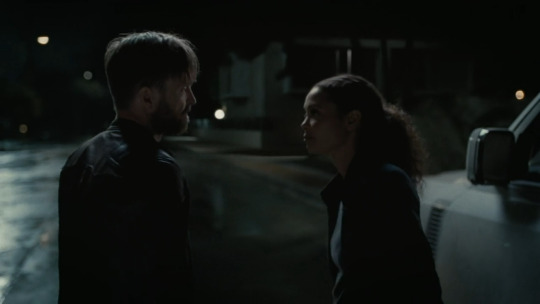
I'm pretty sure all of the real locations used to film these particular scenes are based in Southern California, but I'm headcanoning that in-universe the Senator's home is located in Northern California, a lot closer to the state capitol in Sacramento.
If Maeve were to drive mainly I-5 Northbound from Los Angeles to Sacramento, they would get there in about 6 to 7 hours, pending traffic and weather conditions and excluding any rest stops or detours used.


I don't think they would've made any rest stops. They were on a tight schedule to try and get to the Senator before William could, and Maeve doesn't really *need* sleep as a host in that it doesn't provide any of the restorative functions it does for the human body. She does choose to sleep sometimes, but I would sincerely hope not while driving a car. Caleb on the other hand appears to be just waking up from a car nap right here, but I don't think he would've been asleep for the entire journey. It reads more like he's trying to continue an earlier, unseen conversation with Maeve that probably could've gone something like Caleb asking 'where have you been all this time?' and Maeve giving a vague-ish answer like 'oh in a quiet little cabin in the woods somewhere cold'.

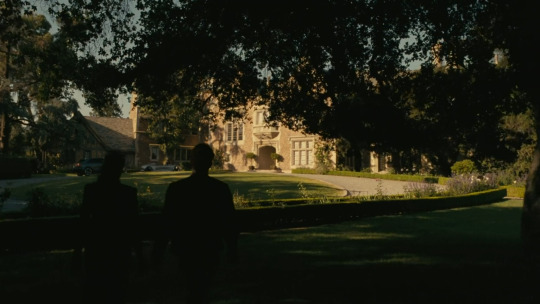
I couldn't find any info about where these two particular locations are based but I am still generally assuming "somewhere in SoCal" and once again, setting it in NorCal in-universe anyway. These make up the exterior of the estate owned by Senator Ken Whitney and his wife Anastasia Whitney. Another interior/exterior location features the barn at Will Rogers Historic State Park in Pacific Palisades and serves as the stable where the real Anastasia is being held under Hale's mind control.
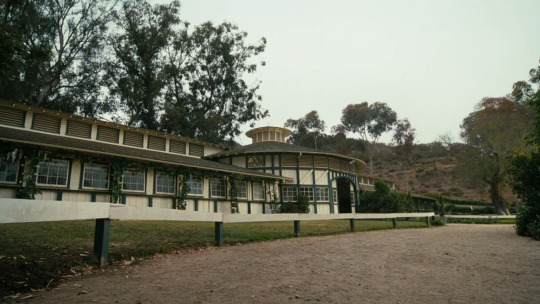
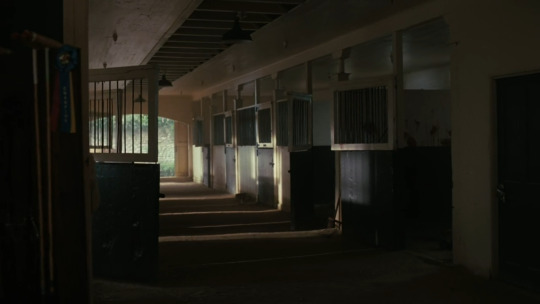
They head back to Los Angeles to attend the opera opening at Angeles Arts Pavilion (which is actually the Younes and Soraya Nazarian Center for the Performing Arts located at CSU Northridge). That's another 6-7 hour drive back and this time they would've stopped at a tailor to obtain Caleb's tux and Maeve's gala dress.
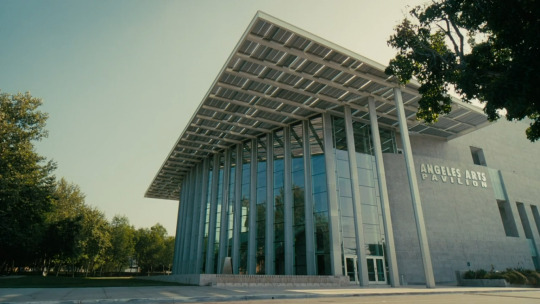
So collectively, Maeve and Caleb would've spent somewhere between 12-14 hours on the road driving to the Senator's estate and back. Almost immediately after they get back TO Los Angeles they then get shuffled away again by a secret train headed off to Nevada for the unveiling of the Golden Age park.

#big data compiles information on everybody — meta.#sorta??#mostly just an excuse for me to point out that the duo spent 14 hours in a car together#and muse about all the possible bestie talks they had
2 notes
·
View notes
Text
Stephanie Hoston Age
Stephanie Hoston, born on December 27, 1990, in Los Angeles, California, is currently 33 years old. Raised in the San Fernando Valley, she pursued her passion for the performing arts from an early age. Stephanie earned a bachelor's degree in Film Production with an emphasis on editing from California State University, Northridge (CSU Northridge), where her senior thesis film, Diana Leigh, won a student DGA Jury Award.
Throughout her career, Stephanie has showcased her versatility across various media platforms. She has appeared in recurring roles on television series such as HBO's Perry Mason and CBS's FBI: International. Her theater credits include performances in productions like Godspell and Spring Awakening at venues such as The Geffen Playhouse and Pasadena Playhouse.
Stephanie Hoston age is often a point of interest for fans who admire her talent and dedication. Her journey in the entertainment industry reflects years of hard work and perseverance. Apart from acting, she has also dabbled in voice-over work, lending her voice to various animated projects and video games.
Stephanie Hoston age does not define her career but adds to her depth as an artist with over a decade of experience. She continues to challenge herself with diverse roles, proving her ability to adapt to different storytelling styles. Many industry insiders consider her one of the promising talents to watch in Hollywood.
With numerous projects lined up for the future, Stephanie Hoston age remains a curiosity for those following her career. As she continues to grow in the industry, her talent and commitment to her craft remain the most defining aspects of her journey. Fans eagerly anticipate her next move, knowing she brings authenticity and passion to every role she takes on.
0 notes
Text

Universities That Accept Low GPA for Master’s in the USA | Study in the USA
Introduction
Dreaming of pursuing a Master’s degree in the USA but worried about your low GPA? You’re not alone! Many students face the same challenge but still find ways to secure admission to top universities. While GPA is an important factor, many universities consider other aspects like work experience, strong SOPs, recommendation letters, and standardized test scores (GRE/GMAT).
In this article, we explore U.S. universities that accept students with a low GPA for master’s programs, strategies to strengthen your application, and tips to increase your chances of admission.
Top U.S. Universities Accepting Low GPAs for Master’s Programs
Many universities take a holistic approach in their admissions process, meaning a lower GPA does not automatically disqualify you. Below are some universities that accept students with a GPA below 3.0 for master’s programs.
1. University of South Florida (USF)
Minimum GPA: 2.5 – 3.0 (varies by program)
Why Apply? USF offers flexible admission policies, research opportunities, and strong support for international students.
2. California State University (CSU) System
Minimum GPA: 2.5 – 3.0
Why Apply? Many CSU campuses (such as CSU Long Beach, CSU Northridge) accept applicants with lower GPAs, focusing on work experience and personal statements.
3. University of North Texas (UNT)
Minimum GPA: 2.8 (some programs accept 2.5 with justification)
Why Apply? UNT provides conditional admission and offers programs across various fields, including engineering, business, and social sciences.
4. Texas A&M University – Kingsville
Minimum GPA: 2.6+
Why Apply? Known for its engineering and business programs, Texas A&M Kingsville offers conditional admission for students with lower GPAs.
5. University of Louisiana at Monroe (ULM)
Minimum GPA: 2.5+
Why Apply? ULM considers applicants with strong professional backgrounds, standardized test scores, and compelling SOPs.
6. Southern Illinois University (SIU)
Minimum GPA: 2.7+
Why Apply? SIU is known for its research-driven master’s programs and student support services.
7. Liberty University
Minimum GPA: 2.5+
Why Apply? A flexible admissions process with online and on-campus options, making it ideal for students with diverse backgrounds.
How to Strengthen Your Application Despite a Low GPA
1. Ace the GRE/GMAT
A high GRE or GMAT score can compensate for a low GPA, especially for programs in business, engineering, and sciences.
2. Write a Powerful Statement of Purpose (SOP)
Your SOP is your chance to explain your academic challenges and highlight your strengths, passion, and career goals. Address your low GPA and demonstrate improvement through experience, projects, or certifications.
3. Get Strong Letters of Recommendation
Professors, employers, or mentors who can vouch for your skills and potential can make a huge difference in admissions decisions.
4. Gain Relevant Work Experience
Many universities value real-world experience over GPA, especially in MBA, engineering, and IT programs. A strong resume with internships and projects can boost your application.
5. Apply for Conditional or Probationary Admission
Some universities offer conditional admission, allowing students to prove their academic abilities during the first semester before gaining full admission.
Final Thoughts: Your GPA is Not the End of the Road!
A low GPA should not stop you from pursuing your dream of studying in the USA. By choosing the right universities, strengthening other aspects of your application, and demonstrating your passion, you can overcome academic setbacks and gain admission to a top graduate program.
If you’re serious about studying in the USA, start researching, preparing strong application materials, and reaching out to admissions offices today! Do you need help finding the right university? Drop a comment or message me for guidance!
0 notes
Text
0 notes
Text
0 notes
Text

Dr. Ruth Simmons (born Ruth Jean Stubblefield, July 3, 1945) is a professor and academic administrator. She served as the eighth president of Prairie View A&M University (2017-23). She served as the 18th president of Brown University (2001-12), where she was the first African American president of an Ivy League institution. She was named, the best college president by Time magazine. She headed Smith College (1995-2001). The first accredited program in engineering was started at an all-women’s college.
A professor of literature in the Romance languages, she was called out of retirement to head Prairie View, where she increased scholarships and funding. She is a fellow of the American Academy of Arts and Sciences, the American Philosophical Society, an honorary fellow of Selwyn College, Cambridge, and a Chevalier of the French Legion of Honor.
In February 2023, she announced plans to advise Harvard University regarding relationships with HBCUs. She is the President’s Distinguished Fellow at Rice University.
She was born in Grapeland, Texas, the last of 12 children of Fanny (née Campbell) and Isaac Stubblefield. Her teacher Vernell Lillie, talked to her about attending college, something she had never considered before. She earned her BA from Dillard University. She earned her MA and Ph.D. in Romance literature from Harvard University.
She was an assistant professor of French and Assistant Dean at the University of New Orleans (1973-76). She moved to California State University, Northridge (1977-79) as administrative coordinator of its NEH Liberal Studies Project and acting director of CSU-Northridge’s International Programs, and visiting associate professor of Pan-African Studies.
She was Assistant/Associate Dean of Graduate Studies at USC (1979-83). She served as Assistant and Associate Dean of faculty at Princeton University (1986-90). She served as provost at Spelman College (1990-91) and returned to Princeton as vice provost (1992-95).
She married Norbert Alonzo and they have two children. #africanhistory365 #africanexcellence #alphakappaalpha
1 note
·
View note
Text
American Boyhood, the Comic Transition
The lecture taught by Charles Hatfield, a current CSU Northridge professor, goes on to tell the work of New York American comic-book artist Jack Kirby. Kirby’s most profitable work that he has done was a franchise called Young Romance comics that launched in 1947 and made one fourth of the entire comic market. Later in 1951 it moved 1 billion copies of comics to America. I mention this prior to what Hatfield's approach to the rest of his lecture, mainly to demonstrate the transition of what was once Kirby’s career. From appealing to adolescent boy rascals to teenage girls. The environment of what appeals to comic book readers in a certain time frame was crucial to adapt to, which is exactly what Kirby did. During such a crucial time it is important to appeal to the horror of boyhood, knowing that a time would come when these boys will have to give up their games, and there is a fear of knowing how that could be done.
The childhood studies approach of “American boyhood” as a kid during the time of World War II gave many the impression of kids at war. In all of the comic book series during this time such as: Boy Commandos, Boy Explorers, and Boys Ranch, none of these characters grow up.This decision of never growing reflects many of the “feral, heroic, violent, moral and innocent troubles of boyhood” that Hatfield emphasizes on. Other series such as Newsboy Legion (1942) and Super Teens (1960’s) gave the same impression of being forever youthful, naive and not having to worry about what comes with the responsibilities of adulthood, plus super cool impressions of having mutated powers.
In the collective endeavor of milestones of Kirby’s career, he decides to depict early crime and war through his comics. Along with his partner Joe Simon, he creates and then loses Captain America in 1941 to 1942 since Marvel took for profit their creation. Since then, this gave Kirby yet another transition to launch new creations in 1942, only a few weeks after the declaration of war. These new creations include Sandman, Manhunter, Kid Games, Boy Commandos, “RIP” Carter and much more. Boy Commandos gave a direct allusion to the 4 allied nations with the 4 boys representing a nation, “RIP” Carter was under Detective Comics or now known as DC. However, an interesting fact is how Boy Commandos was more successful in the 1940’s compared to that of the Justice League.
Boarding and Military School has been a great representation of the mutated American boyhood that has shaped many boys into the supposed manhood that may be known today. There was a creation of story papers made to specifically target the empowerment and socialization for leadership among these young boys. Survival work or “boy labor” was so vulnerable yet seen as ideal for the transition of boy to man. Hatfield made a great example of alluding to Where the Wild Things are as to show the rebel childish state many boys go through. This “little rascal formula” that Hatfield mentions, has developed and altered through the work of Jack Kirby to depict kids being seen as “boy heroes” and by doing so gives the intel of a child storytelling to something more adult-like.
1 note
·
View note
Text
Better Communications, Better Relationships #shorts
Private Money Academy Conference:
https://www.JaysLiveEvent.com
Free Report:
https://www.jayconner.com/MoneyReport
Watch the Full Interview at:
youtube
“Private Money Fundamentals: Key Strategies for Success with Rod Wilson & Jay Conner”
General Manager - Diversified Capital Partners LLC
Owner - Diversified Developers
Rod has over 28 years of experience in all aspects of real estate, including remodeling, building, managing, and marketing both residential and commercial properties.
With a background in funding and managing his own real estate investments and development projects, Rod understands what it takes to be successful and satisfy the needs of lenders and investors.
Rod uses his degree in Finance (CSU Northridge) and vast experience in entitlement, construction, finance, and negotiations to structure projects to minimize risk and maximize returns.
Rod believes the key to success in real estate development is to see what others don’t see, and create great designs and user experiences that the market will appreciate and pay for.
His goal is to outperform other assets by leveraging his team of professionals to add value and deliver a superior product every time and at every price point.
Recent projects include residential rehabs in the greater Bay Area where adding square footage, fixing obsolete layouts and functional issues, and a unique design were the norm.
With Rod’s past experience in managing difficult development projects and challenging market conditions, he is able to provide a ‘second set of eyes’ to help his clients be more successful and overcome difficulties and surprises that inevitably arise in residential construction.
Join the Private Money Academy:
https://www.JayConner.com/trial/
Have you read Jay’s new book: Where to Get The Money Now?
It is available FREE (all you pay is the shipping and handling) at
https://www.JayConner.com/Book
What is Private Money? Real Estate Investing with Jay Conner
https://www.JayConner.com/MoneyPodcast
Jay Conner is a proven real estate investment leader. He maximizes creative methods to buy and sell properties with profits averaging $67,000 per deal without using his own money or credit.
What is Real Estate Investing? Live Private Money Academy Conference
youtube
YouTube Channel
Apple Podcasts:
Facebook:
#jay conner#real estate investing#real estate#youtube#private money#flipping houses#real estate investing for beginners#raising private money#privatemoney#realestate#Youtube
0 notes
Photo

Introducing In the Field with Asians Doing Everything! We are happy to announce that our former blog intern Lara Santos is taking on the role of Field Reporter, bringing you news from the ground on Asians doing everything and anything. Our first feature of our In the Field series is an interview with Ryan Bautista and Rachel Agbayani, President and Info Chair of the California State University Northridge Filipino American Student Association (FASA). Enjoy!
Lara Santos, Asians Doing Everything Field Reporter: How did you start this organization?
Ryan Bautista: It was already started way before I was born, in the 1980s. It's the longest active running cultural organization at CSUN.
LS: Do you know how the organization began?
RB: I'm not too familiar with it, unfortunately. However, there are some members who are kids of those who did start it--so a couple of the past presidents have been the kids of the founding members of FASA. I personally don't know how it started.
LS: What were the influential reasons FASA was founded?
RB: There weren't a lot of cultural organizations on campus at the time, so a group of people wanted to start something where they felt they belonged. They created events like PCN, Filipino Culture Night, in which they showed the rest of the CSUN campus what Filipino culture is about.
LS: What is your organization's relationship to other API communities?
RB: We have a lot of members in multiple organizations. Some are also part of the VSA, the Vietnamese Student's Association, as well as the Japanese Student Association. We have not coordinated any events together this semester, but I know we're trying to; it's still in the works.
LS: Where do you see this organization going in the coming years?
RB: It’s always our goal to try and open up more of our cultural stuff to the rest of campus. Recently, we've been having our cultural dance practices, as well as our PCN practices, out in Matador Square and in public open spaces. We always get like a ton of people coming up to us and asking, "What kind of practice is this?" or "What ethnicity are you guys?" We'll tell them, and some actually come to PCN to see the finished product--the actual show.
LS: Do you have any hopes for the impact this organization will make on not only the CSUN community but beyond it?
Rachel Agbayani: For me, I think we're growing as a bigger group, and we're seeing people who are not just Filipino--we've become very diverse. So we just try to keep our culture out there and keep our ties with everyone. We just want to be more involved in our community and we've been reaching out to JFAV, Justice for Filipino American Veterans, an off-campus organization. I see us growing there, not just as a club, but more as an organization that reaches beyond CSUN.
LS: Is there anything else you want to add or anything you'd want to tell anyone reading this?
RB: You don't really have to be Filipino to mesh with us. It's an open group of people, so it's always fun to do a lot of cultural stuff, but at the same time, we are a social club as well.
#asiansdoingeverything#asians#asian americans#api#apia#apa#in the field#Rachel Agbayani#Ryan Bautista#California State University Northridge#csu northridge#northridge#fasa#college#students#leadership#Filipino American Student Association#csun#filipino#pcn#club
23 notes
·
View notes
Text
hi
Welcome to my page, genderbecking. Though I have no intentions for anyone to view this other than my Communication + Gender professor (hi Picarelli), I figured I should still give myself an introduction. My name is Becky and I am a junior at California State University, Northridge majoring in communication studies. I am writing this blog as my final project and am so very excited to share what I witness in the world around me when it comes to how we human beings interact and live as gendered beings. I am 24 years old, white, born and raised in California, liberal, cisgender, and ‘heterosexual’ (though I’d rather identify as a point within a continuum of sexualities). I am choosing to relay this information to whomever is choosing to read this blog so you can understand where my opinions, ideals, and views may be stemming from. I in no way intend to offend through what I might share, but to simply do that- share.
As for the name, genderbecking, it quite literally sprung into my mind as I was signing up for this account. I am a firm believer that a binary is made up and that in some way, each and every one of us falls within a spectrum of masculine behaviors, feminine behaviors, and all that has yet to be named. I am also a total sucker for a good pun.
That’s all I have for now. I look forward to making some critical observations and sharing them with the other genderbeckers that may find me here.
#gender#sexuality#finalproject#communication#commmajor#commstudies#genderstudies#spectrum#csun#calstatenorthridge#csu#northridge#losangeles
1 note
·
View note
Photo



Marc Digeros, originally from Minneapolis, Minnesota, now resides in Los Angeles, California where he works for the architect, Frank Gehry, as model shop manager. He received his MFA from the University of Washington and his BFA from the University of Minnesota. He spent two years in Helena, MT as a resident artist at the Archie Bray Foundation and received the first ever Taunt Fellowship during his residency. He has taught at schools in the Los Angeles area including CSU (California State University) Northridge, CSU Long Beach, as well as the University of Southern California.
Ceramic artist Marc Digeros says "Wednesday is the new Friday". I hear you Marc.
"Ceramicist Marc Digeros uses “roundness” as a small springboard into a world of angular structures that still maintain softness within their planes and edges. Rather than relying on the wheel, Digeros uses slabs and drop moulds to create these interesting forms. The interior of his vessels maintain the lines from the exterior, reminiscent of a skeleton or a bare bones warehouse. His top layer of surface decoration is often decals. Digeros allows these decals of stripes and squares to distort and bend over the undulating angular surfaces of his pots. He plays with 2D, 3D, interior and exterior space simultaneously, reminding the viewer that both are present in every vessel." (CAN).
http://www.marcdigeros.com/
4 notes
·
View notes
Photo

Study In USA - California State University!! California State University is public university system in California with 23 campuses enrolling over 480,000 students every year. Considering its location wit gets advantage of Sillicon Valley and so is highly popular among Indian Students to pursue masters in computer related domains. Contact our team of experts to apply in one of those campuses. #studyinusa #studyinunitedstates #studentvisa #studyvisa #fivisa #studyabroad #visaconsultant #usaconsultant #baroda #vadodara #california #csu #longbeach #sanjose #fresno #maritime #fullerton #eastbay #northridge #sanmarcos (at SI Visa Consulting Pvt Ltd, Vadodara) https://www.instagram.com/p/BtSPXPHBdq7/?utm_source=ig_tumblr_share&igshid=1musga6d59c5y
#studyinusa#studyinunitedstates#studentvisa#studyvisa#fivisa#studyabroad#visaconsultant#usaconsultant#baroda#vadodara#california#csu#longbeach#sanjose#fresno#maritime#fullerton#eastbay#northridge#sanmarcos
0 notes
Text
0 notes
Photo

Calvin Hicks was a photographer from LA whose work consisted of fine art, documentary, and street photography. Born Mach 19, 1941 in Mt Vernon, West Virginia, he first became interested in photography at age 11 upon receiving a camera as a gift from his father. He later went on to major in art education and taught high school art until he married in 1968 and moved to LA. Working as a probation officer, he never stopped learning about and creating photography and art. In 1984, after trying to get his photography exhibited and finding no success, he co-founded a photography gallery in Santa Barbara Plaza in Baldwin Hills called Black Gallery. According to another of the four co-founders, “If you were a person of color, you weren’t getting very many shows in the area. We took it upon ourselves to do that.” That same year Hicks also was a co-founder of Black Photographers of California, a nonprofit that archived works of the state’s black photographers. Black Gallery closed in 1998, and BPC closed in 2000, donating its collections to the California State University Northridge, which includes 500 photographs taken by Calvin Hicks. He is mostly known for his nudes, nature shots, and public events, including scenes from Venice Beach and LA’s Central Avenue Jazz Festival. In 1992 some of his images were included in the book “Life in a Day of Black L.A.: The Way We See It”, and a year later were displayed in a gallery show about the book at the California African American Museum. His work was also displayed in 2011 at CSU Northridge in the Pacific Standard Time exhibition “Identity and Affirmation: Post-War African American Photography”. He died in 2012. #SupportBlackArt #CalvinHicks #BlackArtHistory https://www.instagram.com/p/B8PX2blBEQh/?igshid=1pkx5oxa2o8tf
42 notes
·
View notes